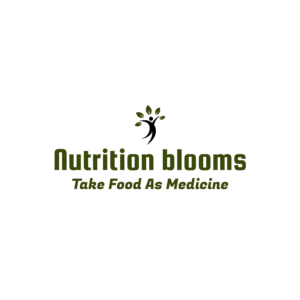Introduction
In the world of spreads, Nutella has carved out its own sweet and creamy niche, winning hearts around the globe with its irresistible hazelnut and chocolate fusion. A versatile addition to toast, pancakes, or even straight from the jar, Nutella is a pantry staple for many. However, as with any indulgence, it’s crucial to understand the nutritional profile to make informed choices about consumption. In this deep dive, we’ll unravel the layers of Nutella nutrition facts, exploring the ingredients, calories, and other essential details that make this beloved spread both delicious and, for some, a source of curiosity.

The Nutella Essence: Ingredients That Make the Magic
Before we delve into Nutella Nutrition Facts, let’s explore the foundation of Nutella – its ingredients. Nutella’s unique and delightful flavor comes from a combination of carefully selected components:
1. Hazelnuts: The heart of Nutella lies in the creamy richness of hazelnuts. These nuts not only contribute to the spread’s texture but also infuse it with a distinct nutty flavor.
2. Chocolate: The essence of chocolate is what elevates Nutella to a heavenly delight. Rich, smooth, and indulgent, chocolate adds that irresistible sweetness.
3. Sugar: To balance the flavors and provide the sweetness that makes Nutella so addictive, sugar is a crucial ingredient. The role of sugar in the overall nutritional equation is worth noting.
4. Palm Oil: Palm oil contributes to the spread’s creamy texture, ensuring a smooth and easily spreadable consistency.
5. Milk Powder: Milk powder is a source of dairy flavor and adds a hint of creaminess to the overall profile of Nutella.
Unraveling Nutella Nutrition Facts: By the Numbers
Now, let’s break down the Nutella Nutrition Facts, examining the values per serving size. Keep in mind that specific figures may vary slightly depending on regional formulations and packaging. As of my knowledge cutoff in January 2022, here’s a general overview based on a standard serving size of 2 tablespoons (37 grams):
1. Calories:
Nutella is a calorie-dense spread, and a 2-tablespoon serving can contain around 200 calories. While it’s a flavorful addition to your breakfast or snack, it’s crucial to be mindful of portion sizes to manage calorie intake.
2. Fat Content:
A significant portion of Nutella’s calories comes from fat. A serving typically contains around 12 grams of fat, with a mix of saturated and unsaturated fats. While hazelnuts contribute healthy fats, it’s essential to be aware of overall fat intake in your diet.
3. Sugar Levels:
Sugar plays a prominent role in Nutella’s sweet taste. A 2-tablespoon serving can contain approximately 21 grams of sugar. Monitoring sugar intake is vital for those mindful of their overall sugar consumption.
4. Protein Content:
While Nutella is not a significant source of protein, a serving provides around 2 grams. For those looking to increase protein intake, pairing Nutella with protein-rich foods can help balance your overall nutrition.
5. Vitamins and Minerals:
Nutella contains small amounts of specific vitamins and minerals, including vitamin E and iron from hazelnuts. However, it’s not a significant source of these nutrients, and it’s essential to diversify your diet for optimal nutritional intake.

Incorporating Nutella Mindfully: Tips for Enjoyment with Awareness
Indulging in Nutella Nutrition Facts can be a delightful experience, and enjoying it mindfully allows for guilt-free satisfaction. Here are some tips for incorporating Nutella into your diet with awareness:
1. Watch Portion Sizes: Be mindful of serving sizes to avoid excessive calorie intake. Use Nutella as a flavor enhancer rather than a primary source of calories.
2. Pair with Nutrient-Rich Foods: Incorporate Nutella into a balanced meal or snack by pairing it with nutrient-rich foods. Whole-grain toast, fruit, or yogurt can complement the sweetness while adding nutritional value.
3. Consider Alternatives: If you’re concerned about specific ingredients or nutritional aspects, explore alternative spreads with reduced sugar or different fat sources.
4. Homemade Options: Experiment with homemade Nutella alternatives using natural ingredients for greater control over the nutritional content.
Conclusion:
In conclusion, Nutella is a delightful treat that has found a permanent place in the hearts (and taste buds) of many. Understanding Nutella nutrition facts allows you to savor its sweetness with awareness, making informed decisions about its place in your diet. Whether you’re a devoted Nutella enthusiast or a newcomer to this creamy delight, navigating the nutritional landscape adds a layer of consciousness to the indulgence. So, go ahead, spread the joy, and relish the Nutella experience, but do so with a mindful eye on the nutritional details that make it a delicious addition to your pantry.


